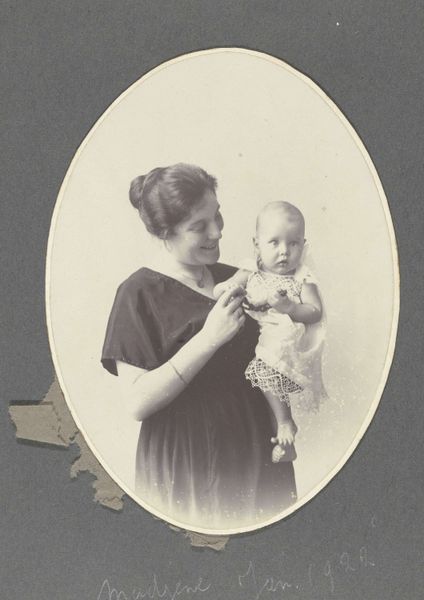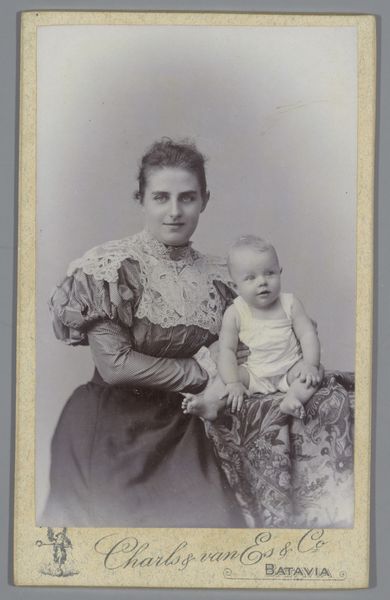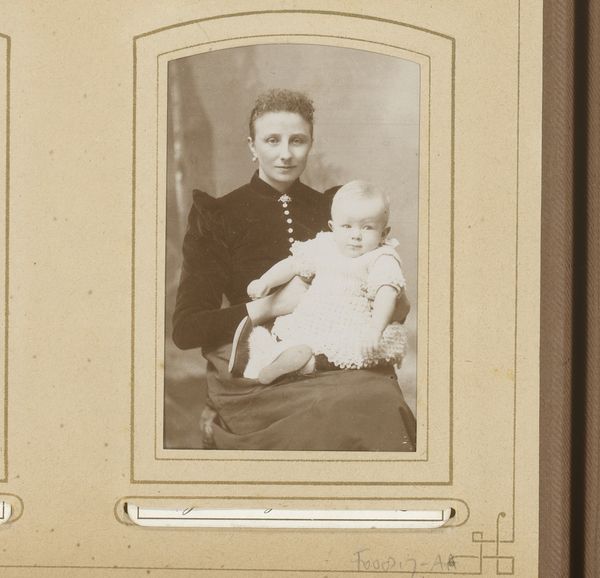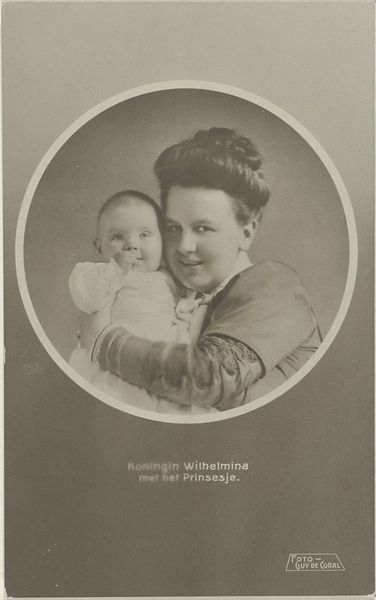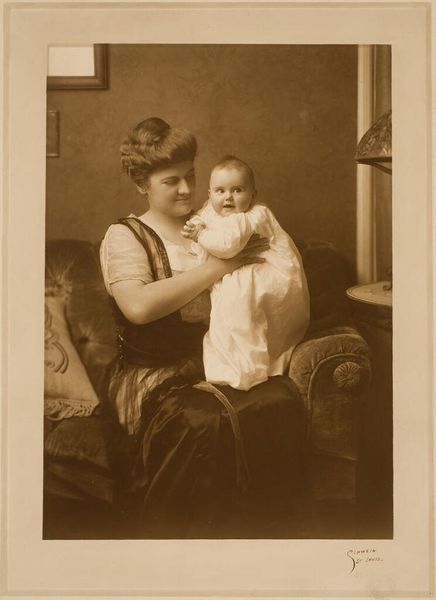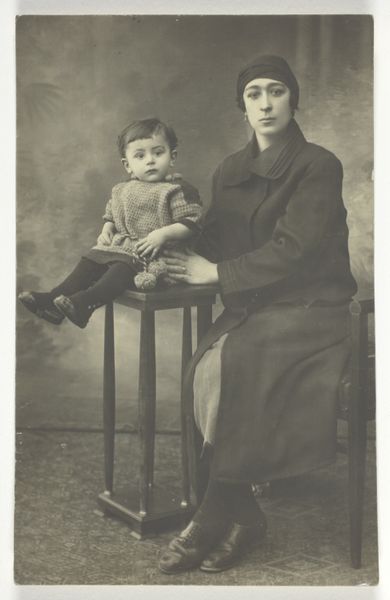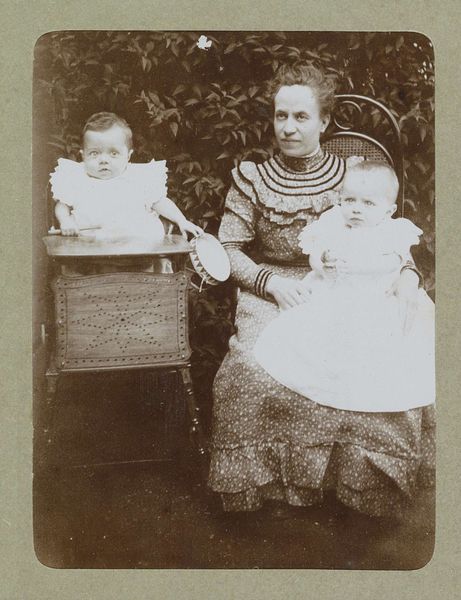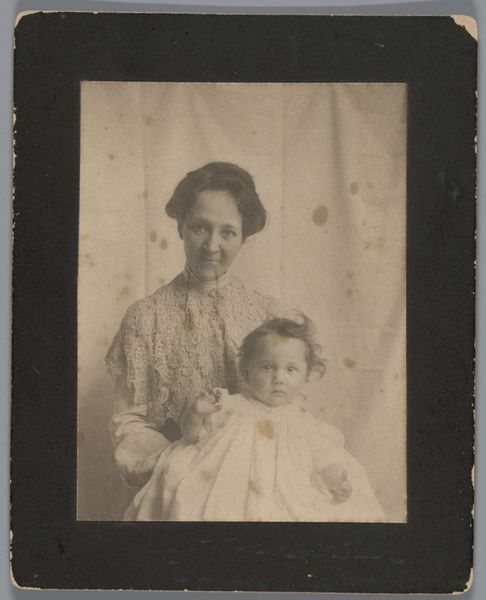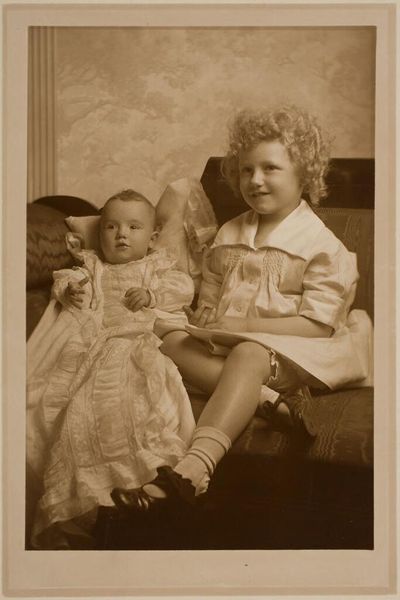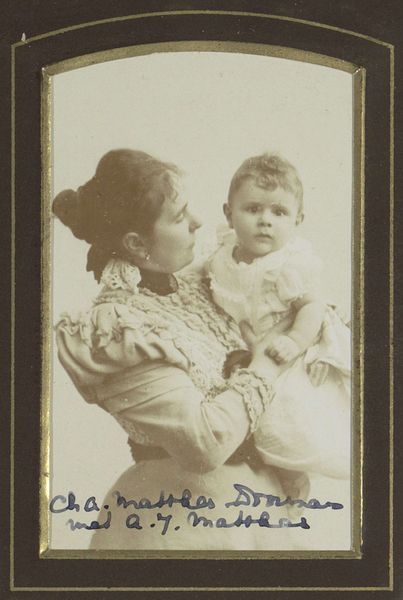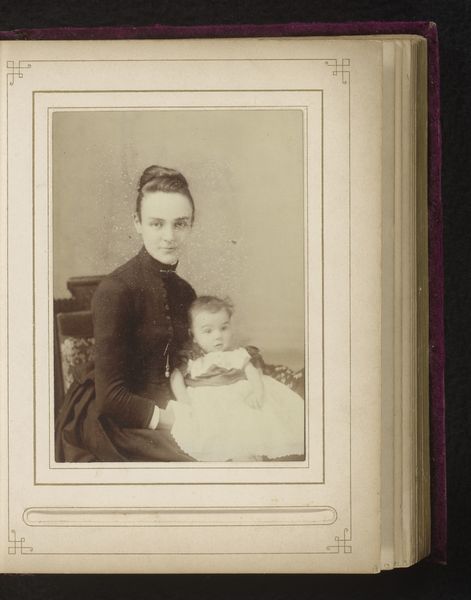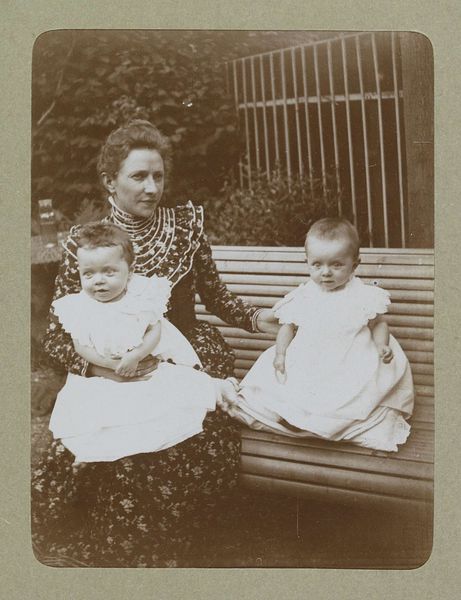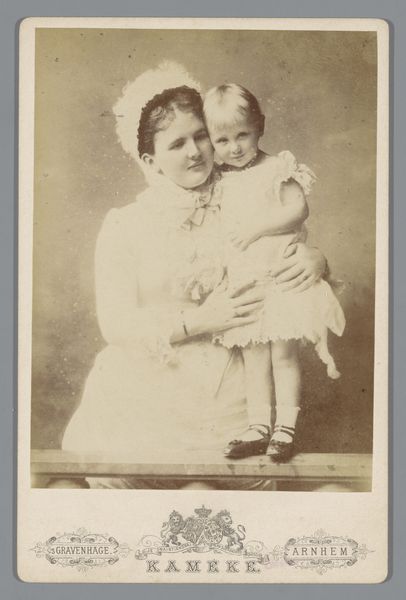
Portret van Wilhelmina, koningin der Nederlanden, en Juliana, koningin der Nederlanden 1909 - 1911
0:00
0:00
photography, albumen-print
#
portrait
#
portrait image
#
dutch-golden-age
#
photography
#
albumen-print
#
monochrome
Copyright: Rijks Museum: Open Domain
Curator: This albumen print, taken between 1909 and 1911, offers us a tender view of Wilhelmina, Queen of the Netherlands, cradling her daughter Juliana, who also later became queen. It was produced by the studio of Guy de Coral & Co. Editor: Aww, look at that baby face! It’s making me think of my niece's first photographs. There’s something so timeless and, well, human about seeing a mother and child captured like this, even if it's royalty. Curator: Indeed. Placing this portrait within the context of early 20th-century photography reveals interesting tensions. Photography was democratizing portraiture, making it accessible beyond the elite. But, this image simultaneously reinforces dynastic power through the sentimental depiction of maternal lineage. The photograph is rendered in monochrome, which lends a sense of timelessness. Editor: You know, monochrome gives a vintage vibe, like an old memory brought to life. Also, her sleeves look gorgeous, so full of embroidered details that you can stare at for hours. Makes you wonder about all the layers of royalty – literally and figuratively, huh? Curator: Absolutely. And the very deliberate pose speaks to the staged nature of royal representation. Wilhelmina's gaze, though seemingly direct, still presents a carefully constructed image of motherhood and queenship intertwined. This work highlights the unique and historically charged nature of female power. Editor: I'd never thought of it that way before. It’s a snapshot but also, a calculated statement. It gets you thinking about how we view powerful women, even queens. It's so much more than just an antique family photo. Curator: Precisely, it offers an avenue for reflecting on both intimate relationships and public perception, as filtered through systems of power. Editor: Exactly. Seeing this, I now feel like I understand how history works—not just reading about it in a book, but by looking at how everyone has their version, then combining these small points of view to tell larger tales.
Comments
No comments
Be the first to comment and join the conversation on the ultimate creative platform.
